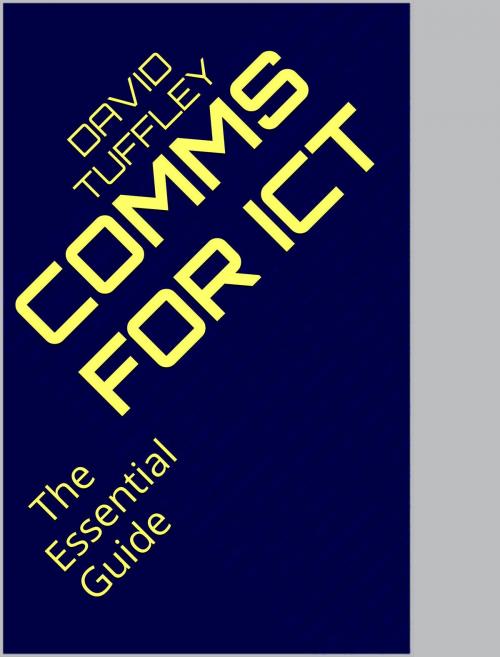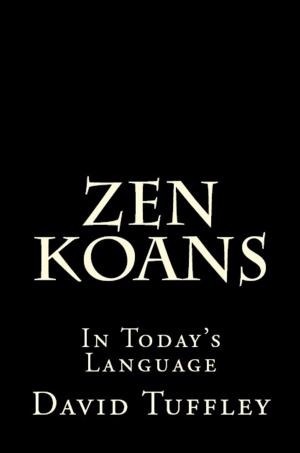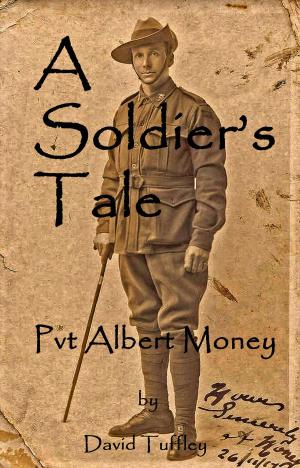Communications for ICT: The Essential Guide
Nonfiction, Computers, Internet, Web Development, Electronic Publishing, Business & Finance, Finance & Investing, Finance| Author: | David Tuffley | ISBN: | 9781465995049 |
| Publisher: | Altiora Publications | Publication: | September 27, 2011 |
| Imprint: | Smashwords Edition | Language: | English |
| Author: | David Tuffley |
| ISBN: | 9781465995049 |
| Publisher: | Altiora Publications |
| Publication: | September 27, 2011 |
| Imprint: | Smashwords Edition |
| Language: | English |
Communications for ICT is an essential guide to technical communication for IT professionals. Whether you want to become a Technical Writer, or simply an IT professional who wants to become better at doing documentation (and that can boost your career), this handy guide is for you. Going well beyond the conventional technical communication text book, it also includes important topics such as professional conduct, argument/persuasion, software project documentation (like requirements specifications), international communication, high-performance project teams and the ethical technologist. These are in addition to how to write technical reports, user manuals and whitepapers.
Communications for ICT is the prescribed text for a course by the same name in the School of ICT at Griffith University, a top-ten research university in Australia. The author combines 15 years of practical experience as a technical writer in the IT industry, with his ongoing academic teaching and research since 1999. Dr. Tuffley has produced a practical guide that can be understood and applied by any IT industry worker wishing to develop these important, but often neglected skills.
Free Templates. Offering outstanding value for money, Communications for ICT provides you with instruction that is the equivalent of a high-quality university level, education. Included in the price are handy downloadable templates that allow the would-be technical writer to be off to a flying start with documents such as user guides, software requirements specifications, design documentation and test plans.
Offering outstanding value for money, Communications for ICT provides you with instruction that is the equivalent of a high-quality university level, education.
Main topics:
- Principles of clear communication
- Writing university assignments and whitepapers
- Technical communication process
- Writing software user documentation, technical reports
- Modes of Technical Communication (paper-based, on-line)
- Tool support
- Editing techniques
- Cross-cultural communication
- Presenting a persuasive, well-argued case
- Effective team membership
- The ethical technologist
Why buy this book? Effective communication in the workplace and in life generally is a major factor contributing to career success and happiness in life. This book introduces you to the principles of clear communication across the areas that a technology-focussed worker will need.
The book takes a holistic approach by placing the content in its larger context of a person’s life. You are shown how these principles apply to your work-related activities, but also how they apply in how you think and live.
The book therefore aims to equip you to become a competent technical communicator with a good understanding of the techniques and tools that are used to produce a broad spectrum of reader-friendly documentation. The book also includes a component on the history of technology, effective team communication skills and the basics of ethical IT.
Communications for ICT is an essential guide to technical communication for IT professionals. Whether you want to become a Technical Writer, or simply an IT professional who wants to become better at doing documentation (and that can boost your career), this handy guide is for you. Going well beyond the conventional technical communication text book, it also includes important topics such as professional conduct, argument/persuasion, software project documentation (like requirements specifications), international communication, high-performance project teams and the ethical technologist. These are in addition to how to write technical reports, user manuals and whitepapers.
Communications for ICT is the prescribed text for a course by the same name in the School of ICT at Griffith University, a top-ten research university in Australia. The author combines 15 years of practical experience as a technical writer in the IT industry, with his ongoing academic teaching and research since 1999. Dr. Tuffley has produced a practical guide that can be understood and applied by any IT industry worker wishing to develop these important, but often neglected skills.
Free Templates. Offering outstanding value for money, Communications for ICT provides you with instruction that is the equivalent of a high-quality university level, education. Included in the price are handy downloadable templates that allow the would-be technical writer to be off to a flying start with documents such as user guides, software requirements specifications, design documentation and test plans.
Offering outstanding value for money, Communications for ICT provides you with instruction that is the equivalent of a high-quality university level, education.
Main topics:
- Principles of clear communication
- Writing university assignments and whitepapers
- Technical communication process
- Writing software user documentation, technical reports
- Modes of Technical Communication (paper-based, on-line)
- Tool support
- Editing techniques
- Cross-cultural communication
- Presenting a persuasive, well-argued case
- Effective team membership
- The ethical technologist
Why buy this book? Effective communication in the workplace and in life generally is a major factor contributing to career success and happiness in life. This book introduces you to the principles of clear communication across the areas that a technology-focussed worker will need.
The book takes a holistic approach by placing the content in its larger context of a person’s life. You are shown how these principles apply to your work-related activities, but also how they apply in how you think and live.
The book therefore aims to equip you to become a competent technical communicator with a good understanding of the techniques and tools that are used to produce a broad spectrum of reader-friendly documentation. The book also includes a component on the history of technology, effective team communication skills and the basics of ethical IT.















